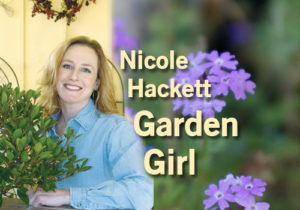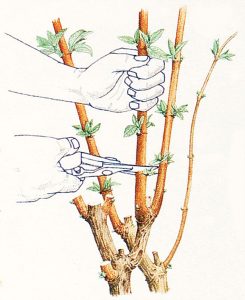Don’t let summer heat harsh your garden’s buzz
 CONTRA COSTA COUNTY, CA (July 17, 2022) — Summer in the garden always brings a list of chores.
CONTRA COSTA COUNTY, CA (July 17, 2022) — Summer in the garden always brings a list of chores.
Spring’s flower displays and surging leaf growth have left our lawns and landscapes a touch tired, in need of some tender loving care. Many of our sun-loving plants have enjoyed their first round of flowers and require attention.
Salvia Hot Lips is a popular variety with bi-color red and white, lip-shaped blooms. This robust perennial needs a healthy trimming after the spring flower rush.
The best way to prune this salvia is to remove a third of the growth, shaping the plant into a sphere. This type of pruning may feel too structured for this free-growing salvia, but it is the best way to renew this perennial and get the maximum second flower display.

Butterfly bushes have panicle-shaped flowers in jewel tones of red, rose, lavender and purple. They are fantastic, sun-loving, large shrubs that look great on Clayton Valley hillsides and fence lines. Yours may still be trickling in bloom, but it’s the perfect time to prune the canes back about a third. Make your cuts just above a leaf. Butterfly bushes love to be fertilized after pruning. Apply a dose of multi-purpose, water-soluble fertilizer to the base of shrubs. You will see the rewards of your effort soon.
Penstemon is another excellent perennial selection for our local landscapes. Trumpet-shaped flowers of red, pink, purple and bi-colors bloom May through October. The trick is to prune after a rush of flowers. Remove faded flower stems clear down to the second round of new leaves. They shouldn’t be hard to spot. Then fertilize to get the plant blooming.
Hydrangeas should also be deadheaded at this time. Those with ball-shaped flowers need to have their expiring heads and stems removed far into the shrub. Once a stem has bloomed, it becomes old and underproductive, so it should be removed. When you have finished pruning, follow up with a dose of water-soluble fertilizer for acid-loving plants.
Care for lawns and borders
Lawns struggle during the summer months. Many lawns are mowed too low or watered at the wrong times, causing burn and brownouts. Consider mowing your lawn every other week or changing the mower to the highest setting. Long lawn blades shade the grass roots and help prevent water loss from evaporation. Water in the very early morning hours, in five-minute cycles, so the water will have a chance to seep in rather than run off.
Do an irrigation check. Turn on your system and make sure you are not watering the sidewalks or driveways.
An excellent way to help boost your lawn during the summer is to amend using a premium soil conditioner. Rake a thin layer into the lawn’s soil using a flexible tined rake. Water in once spread. This will make nutrients available to your lawn naturally vs. using synthetic fertilizers.
Landscape beds and borders should be covered with mulch to keep the soil cool in the heat. Mulch also prevents the soil from losing moisture due to evaporation and helps keep weeds down.
Bark is considered mulch, and it can be found in an assortment of sizes and colors. Mulch can also be bagged products of decomposed wood with additional nutrients. Either way, sealing up the soil is beneficial to a stressed landscape.
You can contact Nicole with questions or comments by email at gardengirl94517@yahoo.com

Nicole Hackett
Nicole is the Garden Girl at R&M Pool, Patio, Gifts and Garden. You can contact her with questions or comments by email at gardengirl94517@yahoo.com
